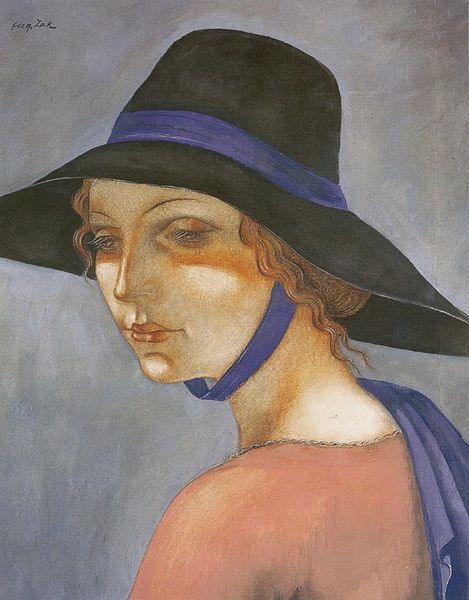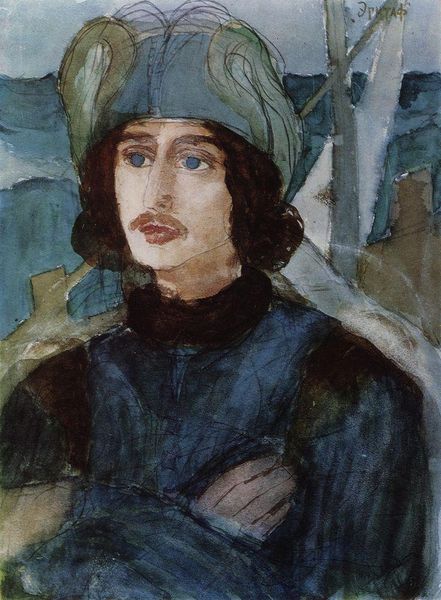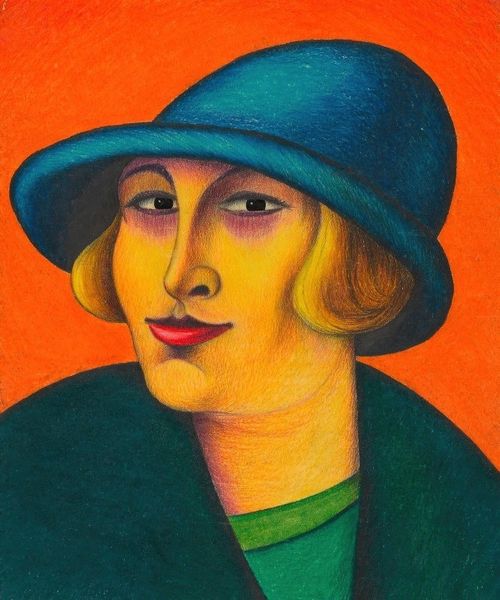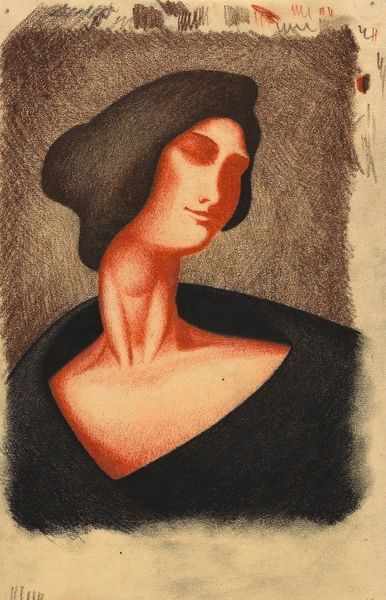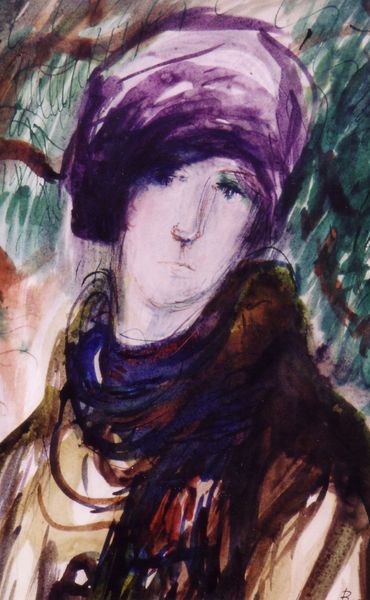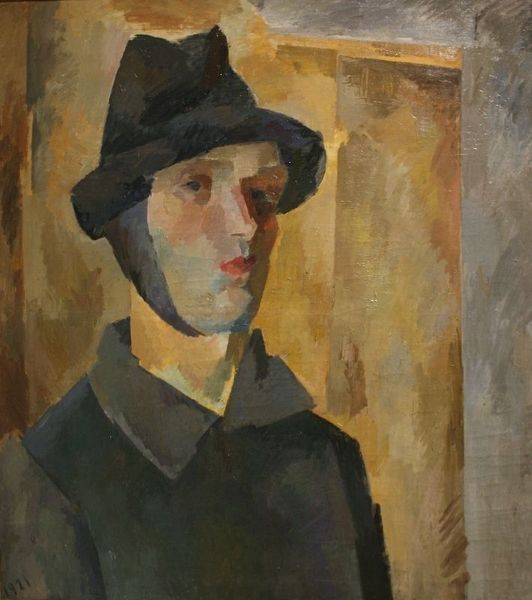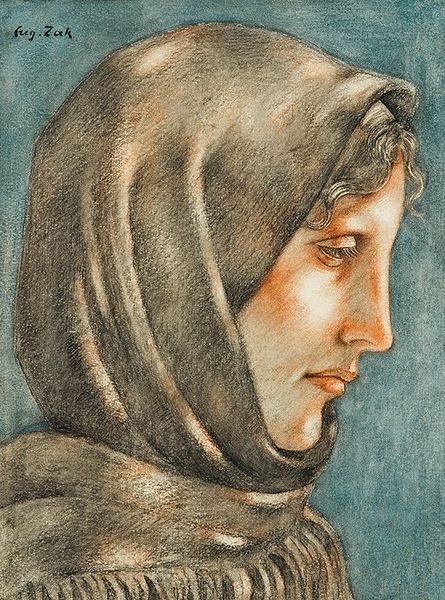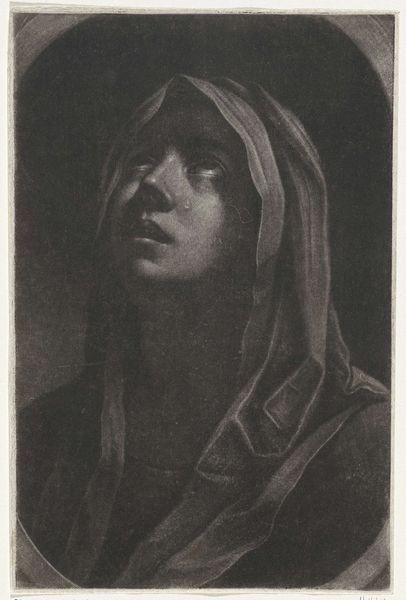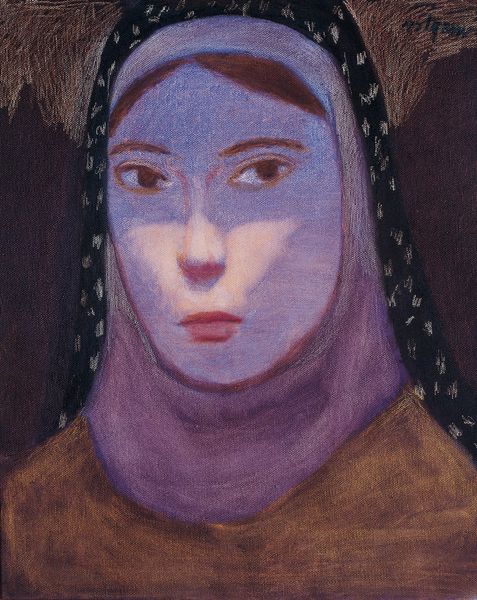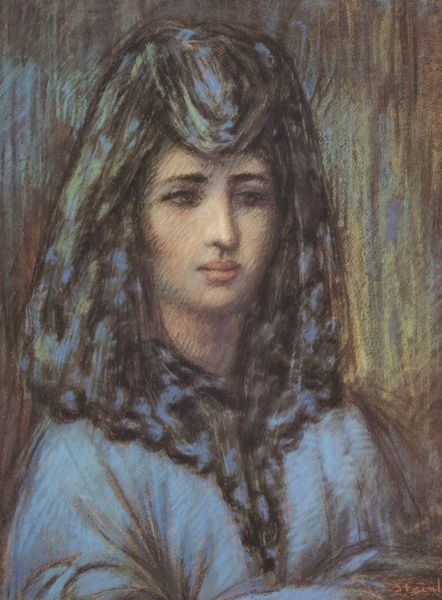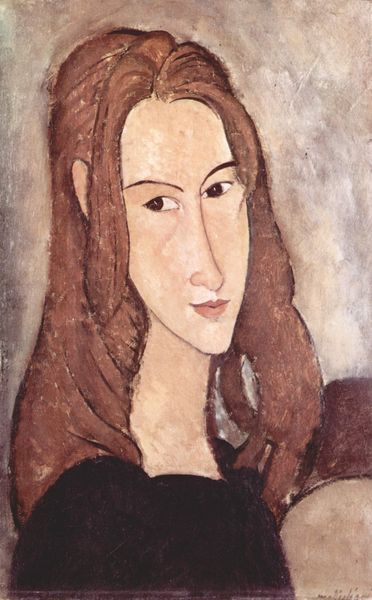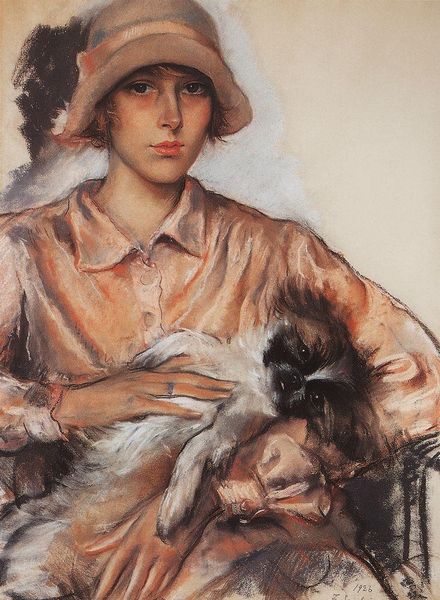
watercolor
#
portrait
#
oil painting
#
watercolor
#
symbolism
#
portrait drawing
Copyright: Public domain
Editor: We’re looking at Eugeniusz Zak’s "Head of a Woman," painted in 1914, using watercolor. It’s quite a somber portrait, isn't it? Almost melancholy with the downward gaze. What catches your eye, and how would you interpret this work? Curator: Oh, she’s definitely swimming in a sea of pensive thoughts. Zak, ever the romantic soul, had a knack for imbuing his figures with an ethereal quality. That elegant swoop of the hat, like a dark cloud framing a dreaming face, hints at a symbolic language. You almost feel she's a character stepped out of a forgotten fable. The blue ribbon-- does it soften the edges or subtly amplify the sadness? What do you think? Editor: I'm struck by how timeless it feels. The watercolor gives it such a delicate quality. It feels modern despite being over a century old. Is that characteristic of Zak's style? Curator: Absolutely! He merged modern sensibilities with a classical elegance. Almost like he was building bridges across time periods. And watercolor, with its inherent unpredictability and light washes, allows a sense of emotional transparency that perfectly suited his artistic quest. He aimed, I think, to reveal the poetry hidden beneath the surface. The magic, if you will. Editor: That’s a really lovely way to put it – poetry hidden beneath the surface. Curator: Precisely. And aren’t we all just wandering poems, really? Editor: That’s beautiful! I’m seeing this in a whole new light now. Thanks so much for your insights. Curator: My absolute pleasure! The canvas whispers secrets if we just lend it our ear, or better yet, our heart!
Comments
No comments
Be the first to comment and join the conversation on the ultimate creative platform.
